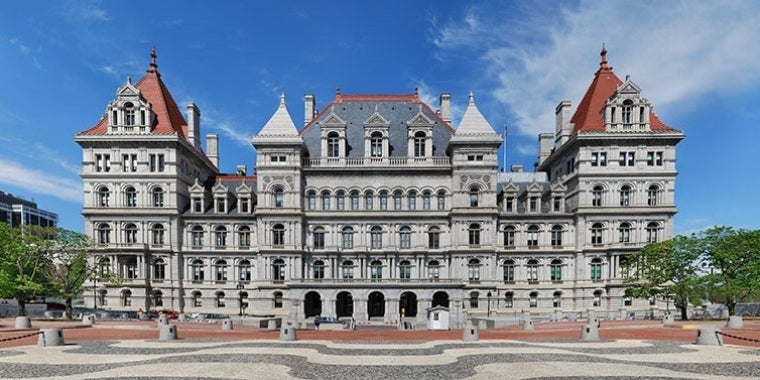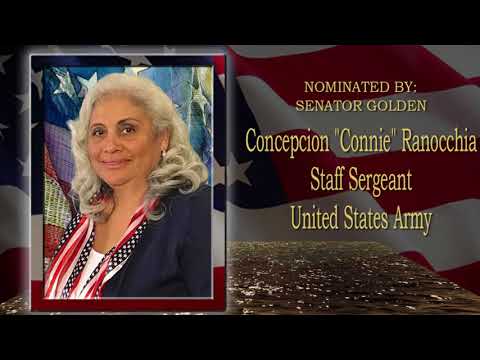
Landmark Workers' Comp Accord Benefits Business And Labor
Brooklyn- State Senator Marty Golden, along with his legislative colleagues, today announced a landmark agreement to reform the state’s workers’ compensation system.
Under the agreement, benefits for injured workers will be increased for the first time in more than a decade, and employer costs, which are among the highest in the nation, will be reduced by 10 to 15 percent with savings to grow over time.
"The agreement on workers compensation reform is a tremendous victory for workers, who will receive increased benefits, and for businesses that will see a significant reduction in premiums," said Senator Marty Golden. "Many of the reforms in this plan result from bills passed by the Senate as well as initiatives discussed at workers compensation roundtables held by Senator George Maziarz. I congratulate Senator Maziarz and the representatives of business and labor for working together to deliver a result that will strengthen businesses and protect employees."
Senator Golden continued, "The outdated system had long been an impediment to job creation and economic growth. The oft-used cliché of ‘New York is open for business’
is appropriate here. This is an important victory."
Key elements of the comprehensive reform package are as follows:
* The maximum weekly benefit for injured workers will be increased from $400 to $500 in the first year, $550 in the second year, $600 in the third year, and to two-thirds of the average weekly wage in New York in the fourth year. Once the maximum benefit reaches two-thirds of
the average weekly wage, the maximum benefit will be indexed annually;
* The minimum weekly benefit will be increased from $40 to $100;
* Cost savings worth hundreds of millions of dollars will be achieved by setting maximum number of years that a small population of claimants can receive cash benefits. Medical services will continue, however, and a safety net will be established to help these workers return to gainful employment and to intervene in cases of extreme hardship;
*Innovative programs are being established to get workers prompt medical treatment and to help them return to work;
*Strong anti-fraud measures will be in place, including the ability to stop work on a job site where a company has failed to purchase workers’ compensation insurance for its workers, higher criminal penalties for violators and debarment provisions;
*An expensive fund known as the Second Injury Fund that is now financed by assessments passed through to employers will be closed. The fund was initially set up to help injured Word War II veterans, but is now instead used by some insurance carriers as a costly
loophole to avoid paying claims; and
*The Compensation Insurance Rating Board, which helps determine workers’ comp costs for employers, will sunset as of February 1, 2008. The Superintendent of Insurance will make a recommendation to the State Legislature in September 2007 as to what, if anything, should replace it.
As part of the negotiated reform package, the Governor, and legislative leaders have directed the Superintendent of Insurance to ensure that these system savings are captured in premium rate reductions, beginning in the next rate setting cycle that concludes this July. This will require the Superintendent to engage the insurance industry on this subject in a way never done before. As the reforms phase in, reductions in premiums and assessments related to the Second Injury Fund are expected to reach double digit levels, providing significant relief to New York’s business community, particularly small employers for whom such costs have been a major impediment.
In addition, after close consultation with the legislature, the Governor has directed the Superintendent of Insurance along with appointees of the legislature, business and labor to work with the Workers Compensation Board, the Department of Labor and legislative Task Forces to pursue a number of additional reforms administratively and to make recommendations about additional legislation. These important initiatives include:
*Gathering data on system costs. For years, the legislature and the public has had to struggle to understand the costs and the outcomes of the workers compensation system. There will now be transparency;
*Designing an expedited hearing process to reduce litigation and speed the time it takes for workers to receive treatment and return to work; and
*Designing by year-end new fact-based medical guidelines to replace New York’s current outdated system. In addition, in conjunction with the Workers’ Compensation Board, the Superintendent will design treatment guidelines and training for law judges.
The accord was hailed by business and labor advocates.
Kenneth Adams, President of the Business Council of New York, said: " This is a major step toward reducing the cost of doing business in New York State. It is a big win for improving our economic climate..."
Dennis Hughes, President of the AFL-CIO, said: "The New York State AFL-CIO is proud to have been part of the process and is immensely pleased with this agreement. Labor, business and political leaders joined together to forge an historic agreement for the common good of injured workers, the business community and all New Yorkers. This agreement not only addresses some of the most pressing needs and concerns of injured workers, but immeasurably improves a system long believed to be broken beyond repair. The New York State AFL-CIO is deeply indebted to Governor Spitzer and the leaders for their dedication throughout this process."
###



